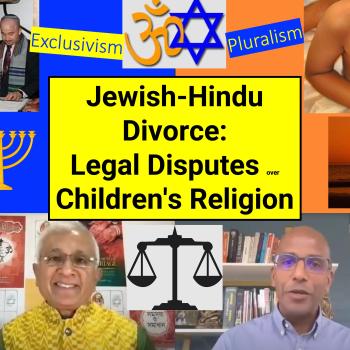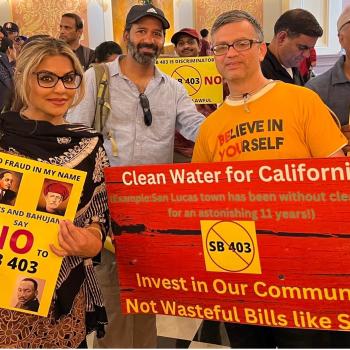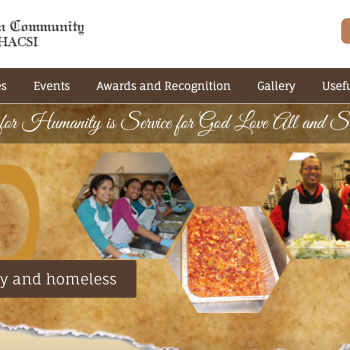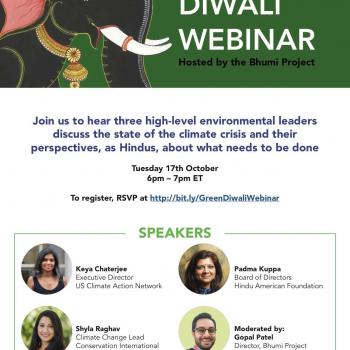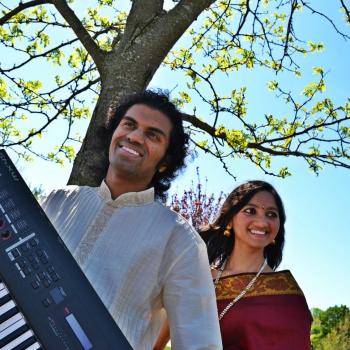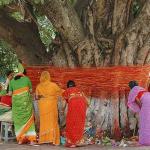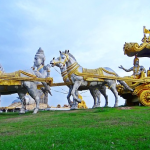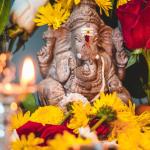Editors’ Note: This post is part of a Patheos symposium —What Good Is Religion? Read more here.
In trying to understand or discuss the “good of Hinduism” – how faith has, in big and small ways, theoretical and very concrete, served humanity and the world for good – one can simply state the obvious. A Hindu can do good by serving others, as indicated in the oft repeated “Manav seva, Madhav seva.” A loose translation – Service to humanity is service to God – doesn’t capture the selfless nature of the service. This idea of serving others in a concrete way is common to many faiths – although in some cases, guidelines are needed to ensure that the service is not doing harm to those receiving them.There are abundant examples of Hindus around the globe serving others: individuals like Vidya Sri, founder of Gangashakti, or Kailash Satyarthi, the Nobel prize winner; and organizations like Ekal Vidyalaya, focusing on providing education to children in need, or Akshaya Patra, focusing on providing food to children in need. But we live in an increasingly globalized and conflict-ridden world, and it is the theoretical, philosophical way that the Hindu religion does good that is significant: its contribution of pluralism.
Nearly a decade ago, when I began my interfaith activist’s journey, I saw One, the Movie. First-time filmmakers Ward and Diane Powers of Michigan assembled 20 of life’s ultimate questions and set out to find answers from city streets to remote monasteries. They started out with a simple mantra, one that resonated with me as I was trying to bring people of all faiths together in my hometown of Troy, MI: We Are All ONE.They posed these questionsto people on the street as well as spiritual masters, in hope of unveiling the truth of our oneness – a oneness that is ensconced in the statement from the ancient Hindu scripture, the Rig Veda, 1-164-146: Ekam Sat, vipraha bahuda vadanti. One of the many ways to translate it: All is One, theologians call it by many names. But as I have discovered throughout my life and this journey of interfaith activism, this oneness does not mean holding hands and singing Kumbayah – it’s really about acknowledging and embracing difference, even as it may make you uncomfortable. And pluralism – that energetic engagement of diversity, as defined by Harvard University professor Diana Eck – is a foundational concept of Hinduism.
he Hindu religion is inherently very diverse, and has many different ways of being sliced and diced. It’s at once monotheistic, polytheistic, henotheistic and more. God and I can be perceived as one or separate (advaita and dvaita, respectively). Different aspects of the Divine are considered supreme (Vaishnavism, Shaivism, Shaktism). Some Hindus believe that Brahman is infinite and formless and can be worshiped as such or in different forms – Nirguna. Other Hindus believe that the Divine is infinite and has a transcendental form – Saguna. According to the Hindu scripture the Bhagavad Gita, oneness with God can be attained through multiple means: Karma yoga, Bhakti yoga, Dhyana yoga, Jnana yoga, and more…with ahimsa (non-violence in thought, word, or deed) being the highest.
While individuals of all faiths come from diverse backgrounds, the majority of this diverse global community of Hindus are Indian, and India is very diverse. The country is also divided into many states, several of which are not majority Hindu, including Kashmir (primarily Muslim) and Nagaland (primarily Christian Baptist) among others. Hindus in India come from different linguistic backgrounds – more than 20 languages are officially recognized in India, including Bengali, Gujarati, English, Hindi, Kannada, Malayalam, Marathi, Nepali, Punjabi, Tamil and Telugu. The understanding of Hindu concepts – such as the Hindu New Year – varies across these different language and geographical communities. The importance of different festivals and holy days differs across the geographical regions – as do the ways of celebrating them. For example, in Tamil Nadu, the custom of having a golu – a special display of deities and crafted figurines – is done during the Navaratri festival, but in parts of Andhra Pradesh, the same thing – known as a bommalakoluvu – is done during the festival of Sankranti.
With so many ways of understanding Hinduism, of practicing Hinduism, of being Hindu, it is obvious that there is an inherent pluralism in Hinduism – and that this pluralism is an inclusive one, which acknowledges that other religious paths and ways of being religious may be valid. It is this pluralism that has served me, as I manage the multiplicity of my own identity – navigating being a daughter, wife, mother; or employee, volunteer, community activist; or Telugu, Indian-American, Michigander. In a globalized world where we are increasingly required to confront difference – religious, racial, ethnic, whether we like it or not – and engage diversity, it is this kind of pluralism, with its “both/and” approach, that will serve as a password to peace.



